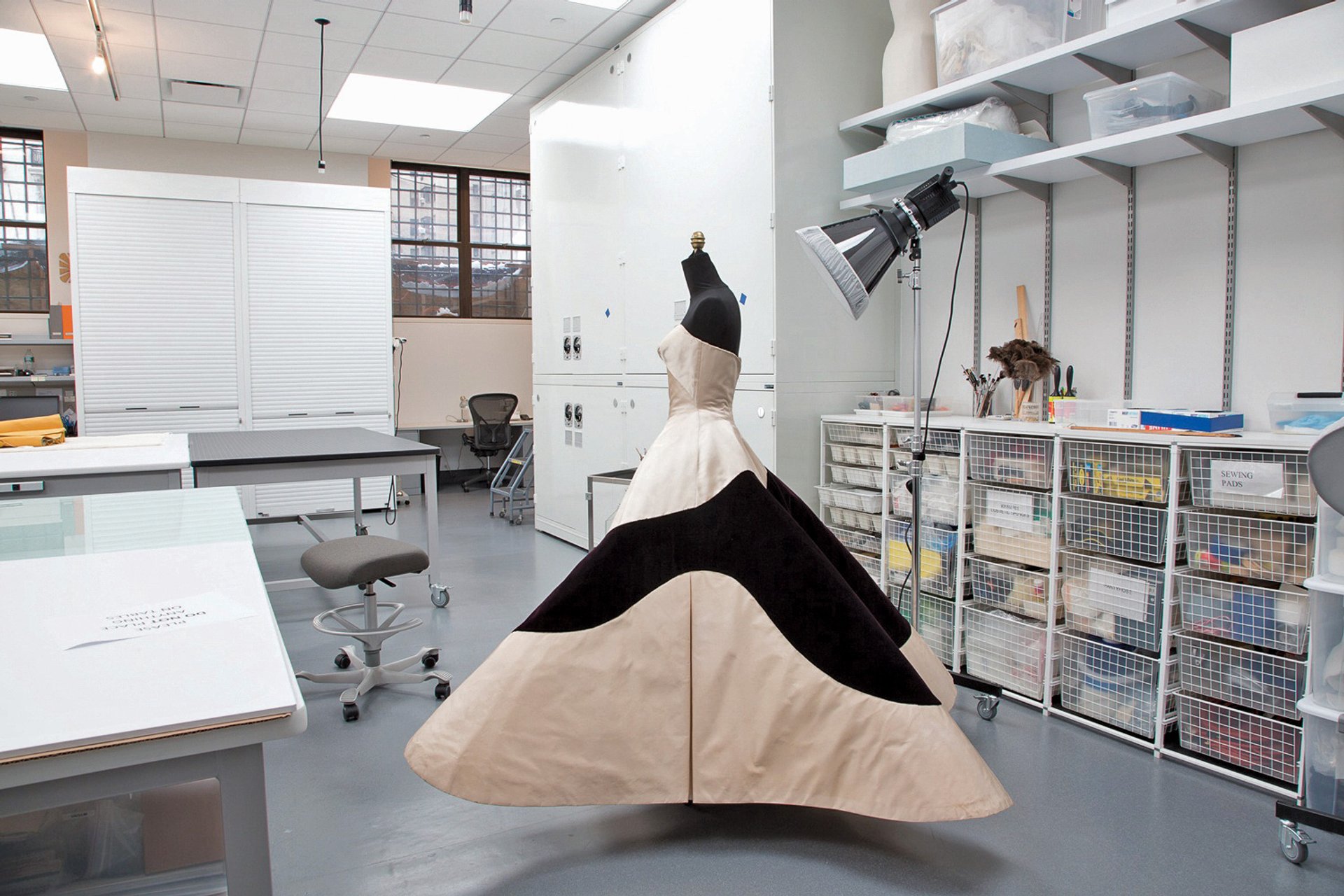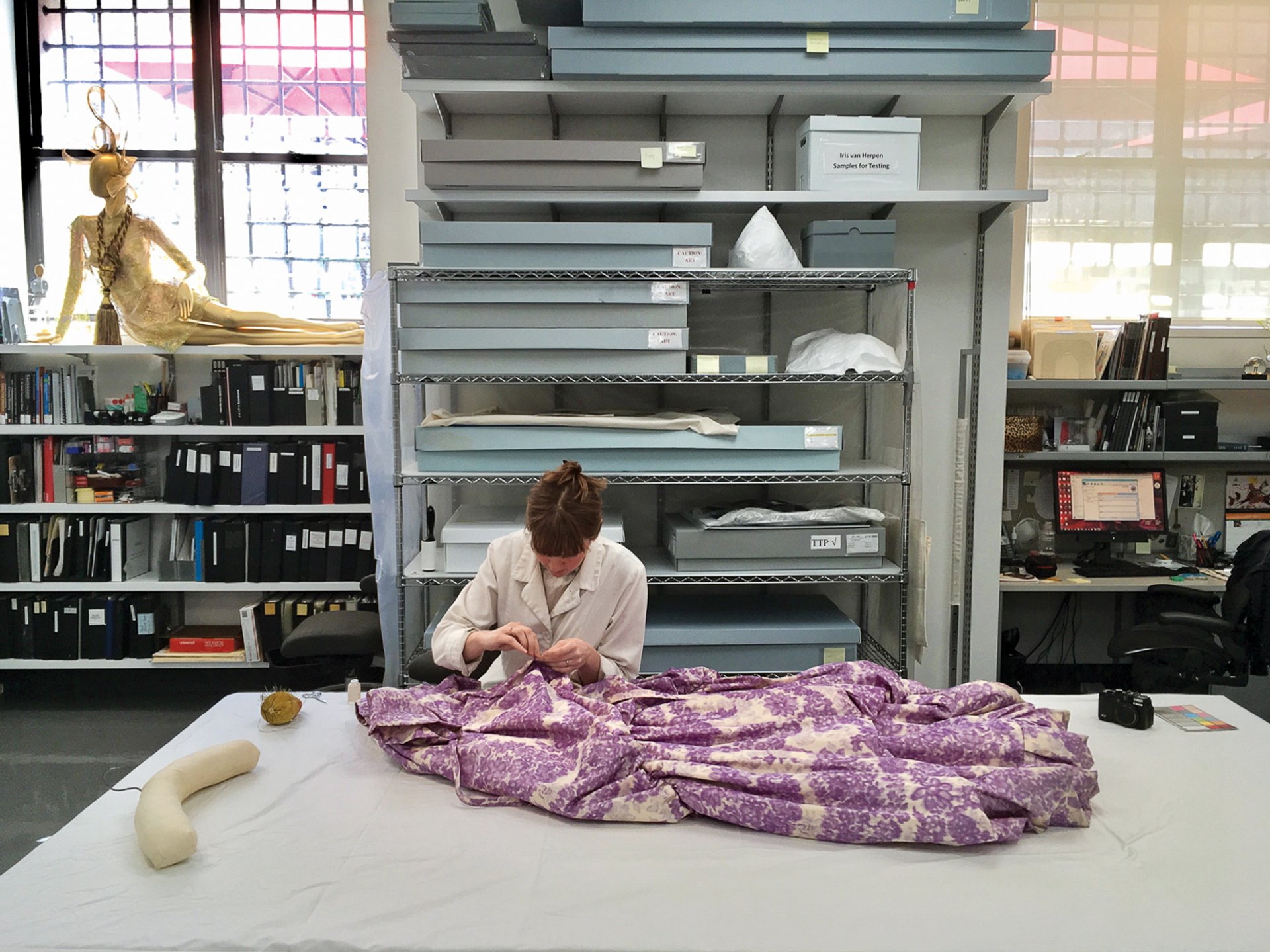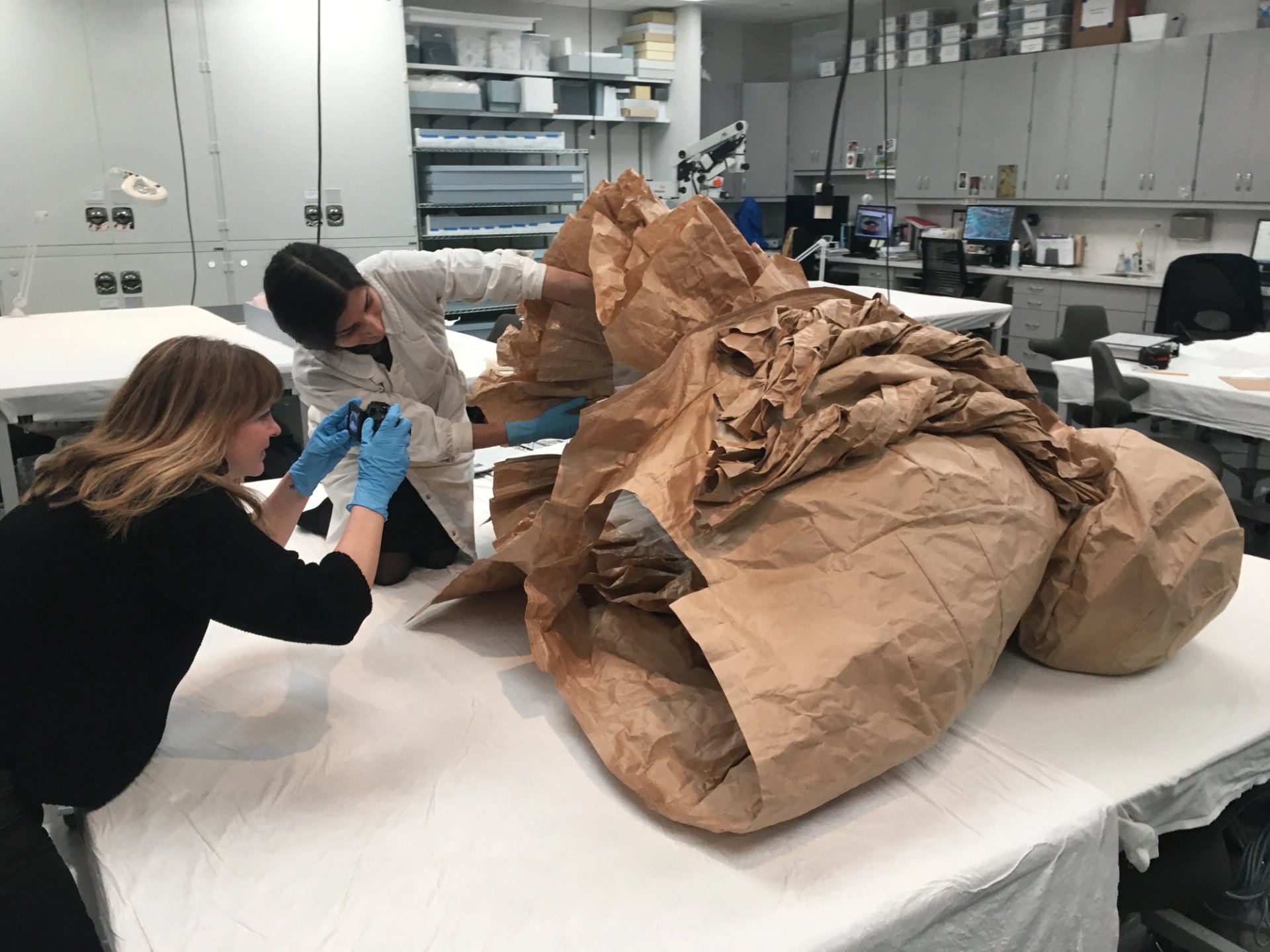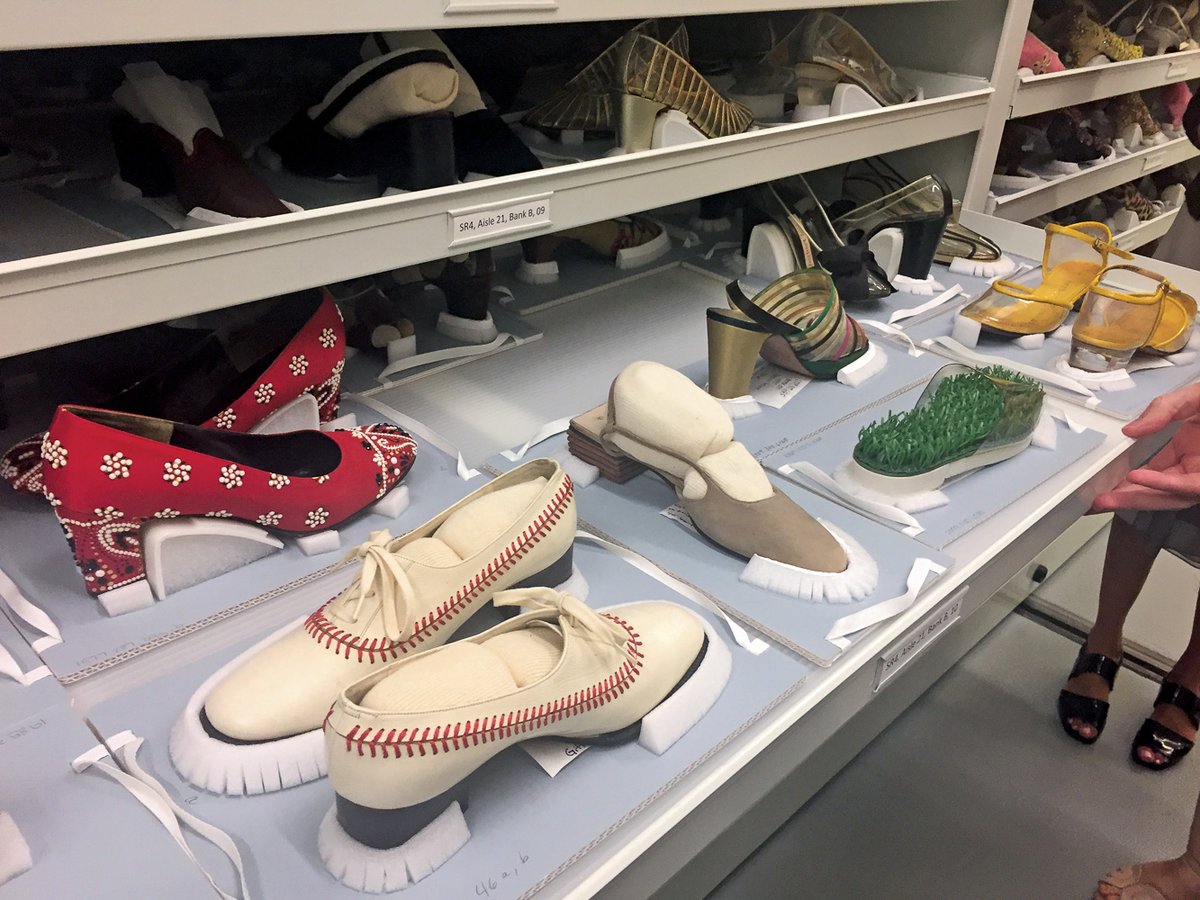Stepping into the backrooms of the Costume Institute at the Metropolitan Museum in New York is like walking into a Tardis or the world’s largest wardrobe that doubles as a time machine. With a collection of 35,000 objects spanning more than half a millennium of fashion, it can take you on a journey through history or offer a glimpse into the future. Each May, it holds the most celebrity-studded fashion show in the museum world, with next year's Catholic-themed exhibition sure to draw the devout. It is also the largest lending department at the Metropolitan, according to the institute’s head curator Andrew Bolton. It sends pieces to international exhibitions every year, including the Dutch Gemeentemuseum Den Haag’s show on the Art Deco designer Paul Poiret (until 4 March 2018). So how does the museum maintain such an extensive and in-demand collection? Enter the Conservation Lab.
The department’s specially outfitted lab opened in 2014 as part of a $40m overhaul of the institute, when it was also renamed the Anna Wintour Costume Center. In it, the conservation team, led by Sarah Scaturro, repairs fragile fabrics and analyses the materials used in historic and contemporary objects using equipment that you might find in a scientific research centre or operating theatre. “We have a polarised light microscope that I like to joke is our little CSI set-up,” Scaturro says. It’s used to identify fibres or polymers in fabrics. “If a dress has a stain and we want to know which solvent or water to use to remove it, we can identify the fibres in the material to make sure our approach is appropriate and that we won’t be doing further damage.”

Courtesy of The Metropolitan Museum of Art
A large surgical stereomicroscope that magnifies objects up to 40 times looms large on another table. “With the naked eye, a button or a bag or even a metal lamé fibre on an object might seem to be in good condition,” Scaturro says. “When we look more closely, we might see corrosion, scratches or damage that could indicate the object is in a much more fragile state.” Even the hand tools are made for the finest work. For some repairs, conservators use a single strand of silk—an impressive feat if you consider that even silkworms spin double strands. “We have these tiny curved needles used by eye surgeons,” Scaturro says.
We have a polarised light microscope that I like to joke is our little CSI set-upConservator Sarah Scaturro
One table has a vacuum attached to the frame to create suction on its surface. “We use that for a variety of reasons,” Scaturro says. “For example, if I’m treating an area where the dye might bleed, I can apply suction to that area so that when it’s treated with a liquid, instead of wicking sideways through the fabric, it pulls directly through. It pulls away all the degradation materials at the same time. I don’t get any tide lines or colour transfer.” The suction table is also used during adhesive treatments, when fabrics such as shattered silk are too fragile to pass a needle through without doing more damage. “One way of ensuring flat, even contact with a supporting material is to apply suction—everything stays in place,” Scaturro says.
Creative storage solutions
The conservators also work hand in glove with the collection storage team to ensure the items in their care—including the holdings of the Brooklyn Museum, which were transferred in 2009—are protected. This includes using fixed or flat shelving to avoid the stresses put on clothing when it hangs—or, in the case of hats with extravagant embellishments, when they wobble. “Correct storage is part of preventive conservation, which aims to prohibit or minimise damage,” Scaturro says. A good example is the handmade cardboard mounts created for each shoe in the collection, which snugly support the heel and toe and allow them to be picked up without being touched.
The work done in the conservation lab can also change how an object is stored. “One piece that comes to mind is a Memento Mori necklace by Simon Costin that includes taxidermied animal parts,” Scaturro says. She noticed small grease stains on the piece, which gave off a faint smell. After close inspection, she discovered that some of the fats in the animal skin were starting to degrade. The work is now stored in an environment without oxygen to slow down further deterioration.
Objects made from synthetic materials such as polyurethane are treated similarly. Working with the museum’s scientific research department, Scaturro can identify if a synthetic material is at risk if exposed to oxygen. If so, the piece is put into “a big, aluminium bag—like a Jiffy Pop bag” that is pumped full of an inert gas, like argon, and sealed. “As long as the bag isn’t compromised in any way, you can store it in an anoxic state long term.”

Coutesy of the Metropolitan Museum of Art
This kind of treatment has the added benefit of killing insects that may be hiding on an object. “It’s a safe method of ensuring that we never bring infested objects into our collection. Part of a conservator’s job is to be conservative,” Scaturro says. “We’re very conservative about how we introduce objects into our collection.” This includes a quarantine period in which every new acquisition is given a thorough inspection and then placed in a bag on top of a sheet of white paper. “We’ll monitor the object for three months,” she says. “If you start seeing activity or maybe some kind of debris on the paper that might indicate pest activity, then we’ll know we have a problem.”
Adaptability is a big part of the conservation field. “We use our equipment in a variety of ways depending on what kind of treatment is required,” she says. “It’s always a challenge because every object is different. We borrow from all industries: the swimming pool industry with its filtration materials, the surgical industry, the home-building industry. You name it… we’re looking to poach materials and supplies that will work for us.”

Courtesy of The Metropolitan Museum of Art




